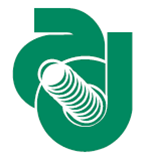Speaker
Paolo Colombetti
(Università di Torino / INAF)
Description
The radioactivity in natural samples like cosmogenic isotopes in meteorites, in Moon samples and in earth and ice in Antarctica, for example, produced by protons, neutrons, $\mu$ mesons and other charged particles is very low, usually below 0.001 disintegration per gram. Therefore, very special techniques are required, particularly if the sample can not be destroyed for chemical separation and also must have possibility of counting large amount of sample. For this purpose we have developed a highly selective Ge-NaI coincidence spectrometer, operating in the underground Laboratory of Monte dei Cappuccini (INAF) in Torino. We have then improved it by developing a multiparametric acquisition system, which allows better selectivity of the coincidence windows (e.g., in meteorites, to disentangle cosmogenic $^{44}$Ti signal from overlapping $^{214}$Bi, originated by naturally occurring $^{238}$U). Applications of this system to the study of meteorites (chondrite, achondrite and iron samples) will be described.
Author
Paolo Colombetti
(Università di Torino / INAF)
Co-authors
Prof.
Carla Taricco
(Dipartimento di Fisica, Universit\`a di Torino, Italy; Osservatorio Astrofisico di Torino (INAF), Italy)
Dr
Gianna Vivaldo
(Dipartimento di Fisica, Universit\`a di Torino, Italy)
Dr
Mario Di Martino
(Osservatorio Astrofisico di Torino (INAF), Italy)
Prof.
Narendra Bhandari
(Basic Sciences Research Institute, Navrangpura, Ahmedabad, India)
Dr
Neeharika Sinha
(Department of Science, Wentworth Institute of Technology, Boston, USA)

